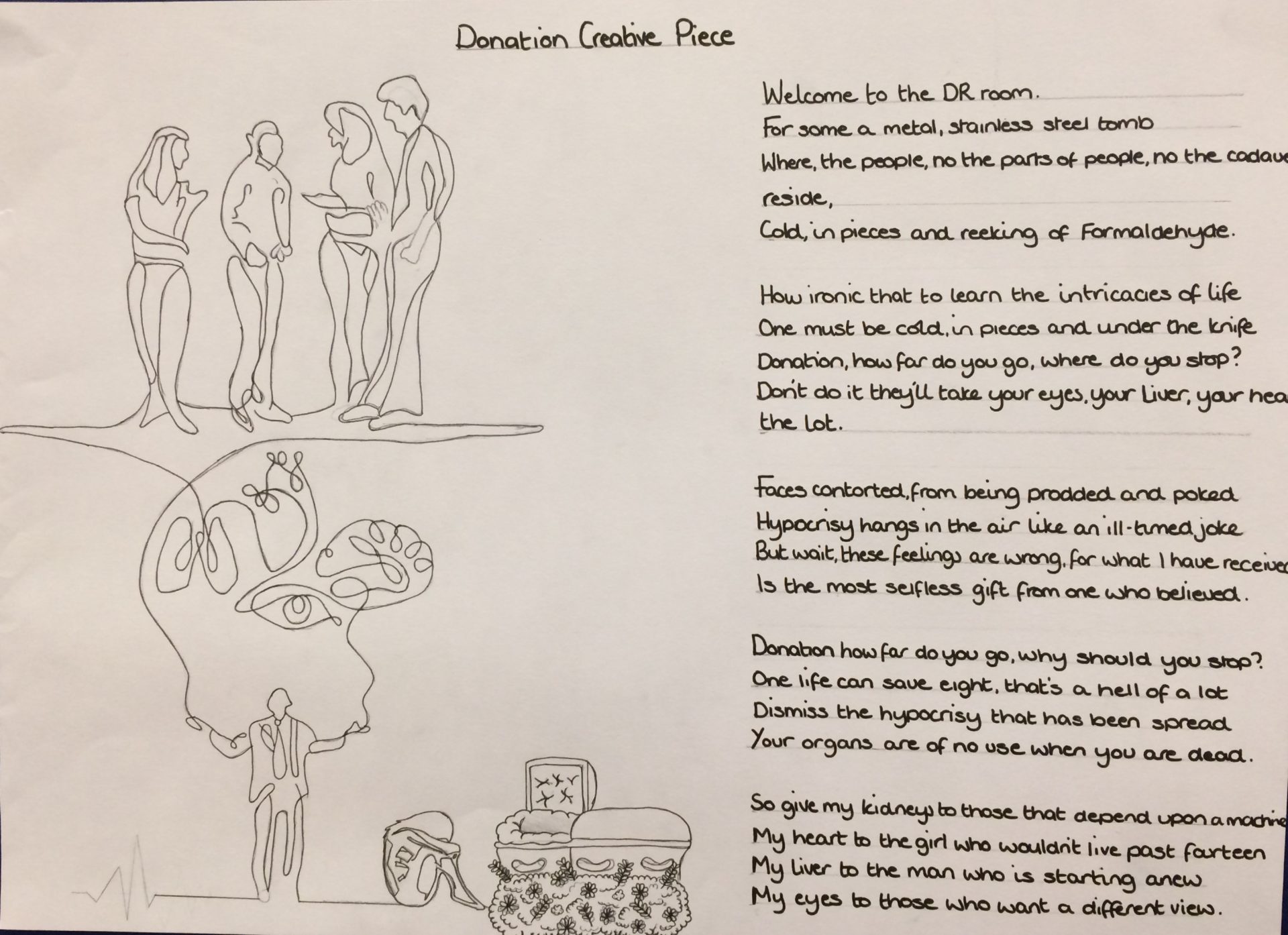Donation
This poem and image explores complexity and apathy around organ and whole-body donation from various perspectives.
Saul Ethan Federman, Rosie Louise Fenton, Oceana Fernando, Loukas Ishwara Fiakkas, Amie Field, Ella Fisher, Tabitha Maisy Flint, Chloe Victoria Flintham, James Felix Flynn, Grave Fountain, Amy Jade Fowler
Year One, Foundations of Medicine Conference, 2018

This creative piece fuelled a growing appreciation for those that have donated their bodies to science and medicine. In recent weeks I have at different times, watched a documentary about body donation and bequeathal and attended the DR room; and only can applaud how skilfully this group tell so many stories with this piece. I am drawn to how this piece can be read from left to right, starting with the ECG wave and ending with the casket (from life to death); or from right to left, starting with the casket and ending with the ECG wave, out of death comes life. To me the fact the piece is shown as connected by using almost one continuous line reflects this group’s understanding of how life and death are interwoven. The poem supplements perfectly the drawing and could be said to mirror very well the thought process of some medical students before and after being in a DR room. It is we medical students that ultimately give life to these cadavers with our enthusiasm and careful handling.
A donated body is the greatest gift any medical student could ever receive. The unique opportunity we are given for learning is precious. Yet it is also strange, for how can the knowledge to save a life come from a place surrounded by death? The poem voices my thoughts and doubts upon entering a DR room for the first time – the nagging voice in my head wondering if my actions were somehow wrong. But I have learned, like all medical students before me, that it is the most selfless gift anyone can give, and it should not be wasted. The drawing accompanies the poem perfectly. It illustrates how a stopped heart is not the end of the line and how life can carry on. They say we die twice. Once when the breath leaves our body, and once when somebody says your name for the last time. Donations allow us to remember those names for a little longer.
I really appreciate the insight of this artwork. It demonstrates the difficulty around organ donation – no one likes the thought of it when they’re alive. To have bits of us cut up or taken out feels like an invasion of our privacy as its an attack on our body, the thing that we experience the world in. But, as the poem points out, that is not an issue when we are dead. When we die, whatever your beliefs, it is clear that we no longer inhabit our bodies, and in fact they aren’t really our bodies anymore, and instead are just bodies. Therefore, donation is a brilliant thing to do because of its life saving power – using our body which we no longer need to help fix someone else’s body that they do need.
I think the combination of art and poetry here works very well to depict both the emotional and the logical sides to the decision of donation.
Donation: A Reflective Reflection of Altruism: This hybrid of poetry and simple sketches of human body organs explores the complexities around the emotion of organ and cadaver donation. It opens with a visceral description of the dissection room, uncomfortably clinical, then slowly moves to gratitude, acknowledging the healing and helping nature of donation. Using imagery and thoughtful verse, this piece captures the dichotomy of unfortunate human dissection contrasted with the noble act of leaving a legacy through donation. This piece is not just a deep contemplation of death , or how donating proves to be also an educating experience but a form of giving that helps the next level of care.